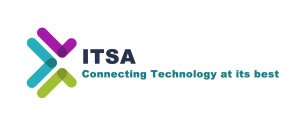Businesses large and small have realised enormous benefits from the escalation in access to and use of internet websites but this trend has also demanded radical changes in business models, not least in those companies operating in the global electronic components markets.
Many organisations believe that using the internet has made their organisation more productive but there has been little detailed analysis to support this. Heavy investment in web-based commerce continues at a pace – some companies have even attained a true leadership position in certain areas – but there are some who do remarkably little but continue to prosper.
Increased use of “back office” e-commerce tools has made huge savings in the speed and quality of data input and the transfer of data and information both within and between organisations. Sadly similar gains in efficiency and effectiveness have not been reflected in productivity and sales revenues, as most customers view good administrative systems as a pre-requisite rather than being a tangible “value add”.
Marketers among you will rush to tell me that this isn”t the case with websites that were integrated within the traditional marketing communication function and where the IT department was merely the facilitator. The website revolution has moved from the strategic to the tactical phase and in the process has become subject to the relentless and expensive software developments and refinements provided by a plethora of providers on an almost daily basis.
The levels of investment in organisations” intra-net and external websites has increased significantly in the progression from static to dynamic content, providing a greater range of services, and with the integration of e-commerce functionality. Whilst the IT cost and infrastructure of hosting international websites in multiple languages has increased, few organisations use any metrics to determine the actual cost of continually revising and adding new content, without which they quickly become outdated.
The “corporate branding” and to a degree the organisational culture has become very closely related to its website and online presence. For many organisations their website performs multiple “customer facing” functions and has enabled engagement with more customers without increasing their expensive direct sales teams. This may be why some organisations are of the opinion that their website is increasing their productivity.
Increased productivity or sales revenues?
Electronic components manufacturers and distributors attract new and existing customers to their website with the promise of technical data, price and availability information and in exchange believe they gain significant additional sales revenue opportunities. Less obvious advantages include the removal of the need to publish datasheets, white papers, application notes, price lists and data books in a paper format.
Properly managed a website has the potential to quickly and proactively deliver new product information directly to new and potential customers but the same technology also makes this information publically available, including to competitors. Customers doing a quick automated web search for a product will result in highly competitive price and delivery information from a vast international market. There are also the problems of information overload for the user and the frustrations associated with widespread duplication of common content.
A lot of creative thought is now being applied to make websites “sticky” by building user comfort and confidence, thereby encouraging “preferred” site status, which it”s hoped will translate into increased loyalty and revenue. The ability for customers to download additional “value added” services such as PCB design and upload information about their Bill of Materials further integrates the customer within the supply organisation. By providing customers with information and guidance on environmental legislation, compliance and news services also boost customer loyalty as websites compete to be a one-stop-shop.
Social media
The increased use of a Social Media layer to the Internet, linked to both the organisation”s website and their employees is increasingly blurring the boundaries between work and leisure. In organisations with a strong social media environment having the appropriate controls on the content being presented within the public domain is a challenge and requires a high degree of responsibility and accountability among employees. Managing this process remains a “work in progress” both for the organisation and the individual, it”s certain to evolve but will need discipline and good time management to be effective.
The nature of the electronic component supply business has restricted the use of data mining (extracting customer activity and interest metrics) from websites and has been limited to date but some organisations have obtained very useful information regarding targeting of new product information, products in demand and customer interest, together with a host of other useful metrics, in this way.
Organisations with a strong brand and loyal customer base who have invested heavily in their organisations website feel that some competitors benefit from their efforts whilst making a much smaller investment.
The opposite view
Many organisations believe that their website performs multiple “customer facing” functions and has enabled sales revenue growth without increasing their expensive direct sales teams. In short it”s boosted their productivity. But analysis of the historic employment data of afdec members in the UK reveals that the ratio of overall headcount to sales revenues has remained fairly static so managers must be deploying staff in different functions such as internal technical sales / applications engineers, technical marketing (and probably IT related employees to support their internet infrastructure).
It could be argued that Amazon Supply – which many pundits believe is considering entering the electronic components market – would have a huge competitive advantage based on its websites, e-commerce, logistics operations and customer loyalty associated with its brand. Operating merely as a web based sales operation without the infrastructure and cost for demand creation, Amazon may be considered a global competitive threat.
Fortunately, and regardless of the size and scale of the organisation and its investment in websites and e-commerce, the fundamentals of business still remain true. Marketing guru Dr. Philip Kotler, Professor of International Marketing at the Northwestern University Kellogg Graduate School of Management in Chicago, maintains that only organisations that fully achieve the critical 4Ps (later the 5Ps) of marketing – Product, Price, Place, Promotion and People – will meet their customer”s needs and be fully successful. In the electronic components supply network all the Ps are important but the really critical element is people. People are what make all the other Ps happen, by creating the personal interface that enables the core business relationship to flourish.
The critical element here is to really understand what the customer needs and is therefore prepared to pay for, rather than merely knowing what the customer wants. This takes time, knowledge, experience, communication and collaboration and is not achieved easily. The current industry leaders achieved their position by focussing the efforts of their organisations over many years and will be difficult to displace.
Adam Fletcher is Chairman of Afdec/ECSN
 CIE Components in Electronics
CIE Components in Electronics



